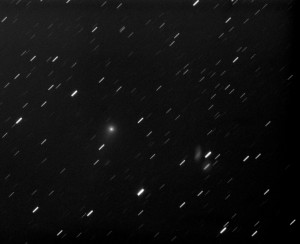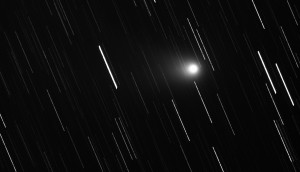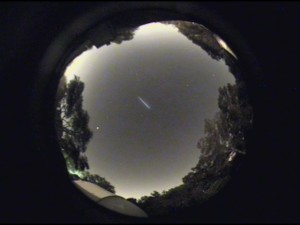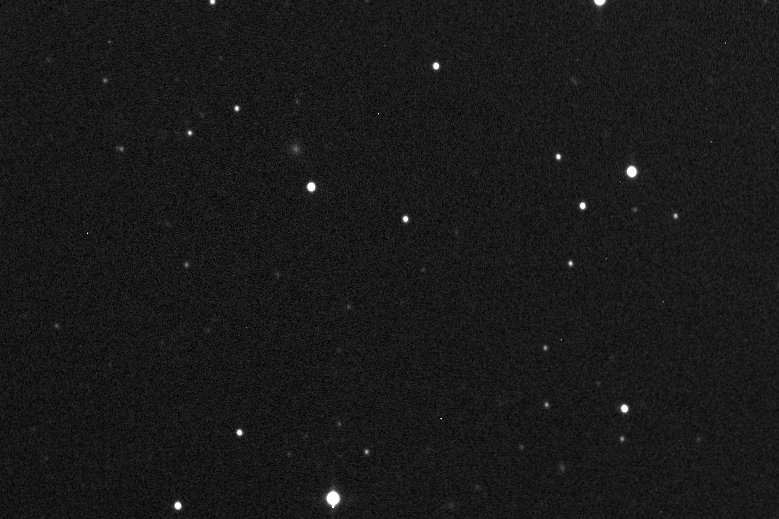The comet 29P/Schwassmann-Wachmann is currently undergoing one of its random outbursts. I measured it at a magnitude of about 14.0. While processing the 9 images I was surprised to see an additional object moving very close to the comet. It is seen as a streak of dots left of the comet. This turned out to be minor planet (19698) 1999 SR4. It is quite bright and I can’t believe I didn’t see the movement while taking the images.
”]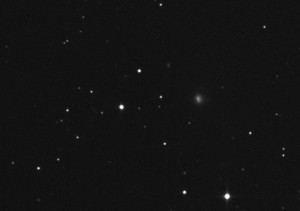 I also need to update an earlier observation I reported. My initial evaluation of the footlights in the observatory has proven incorrect.
I also need to update an earlier observation I reported. My initial evaluation of the footlights in the observatory has proven incorrect.
During the alignment and calibration process I have been getting a strong glow in some of my images. I have been blaming the street light across the street from my house. It is high and bright enough to light the top of some of the trees in my back yard. The observatory dome is also high enough that some of the street light falls on it. I attributed the image glow to that light reflecting off the dome into the dome room. So I took some time Thursday night to see if I could position the dome to block the incoming light. No arrangement of dome position or amount of shutter closure would block the light. Just as a sanity check, I closed the shutter; the glow was still visible in the images. Even though I cannot see any red light on the inside of the dome from the safety footlights, it is obvious my camera can.

I am glad that the fix will be as easy as always turning off the footlights when exiting the dome room. I was envisioning having to replace the street lights with more modern, less intrusive models.
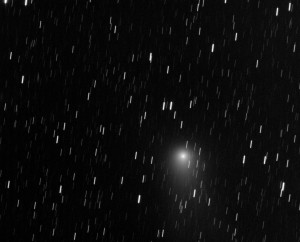 Comet Garradd is currently in Hercules and is nearing my tree blocked western horizon during the early evening so I started with it. I still haven’t tried to view it with binoculars, but it was easy to see in the 6″ newtonian at the Topsail Hill event last Thursday. With a bright star in the FOV, I kept the exposures to only 5 seconds limiting any camera blooming. The star ended up cropped out of the final image so I could have gone deeper for each exposure.
Comet Garradd is currently in Hercules and is nearing my tree blocked western horizon during the early evening so I started with it. I still haven’t tried to view it with binoculars, but it was easy to see in the 6″ newtonian at the Topsail Hill event last Thursday. With a bright star in the FOV, I kept the exposures to only 5 seconds limiting any camera blooming. The star ended up cropped out of the final image so I could have gone deeper for each exposure.